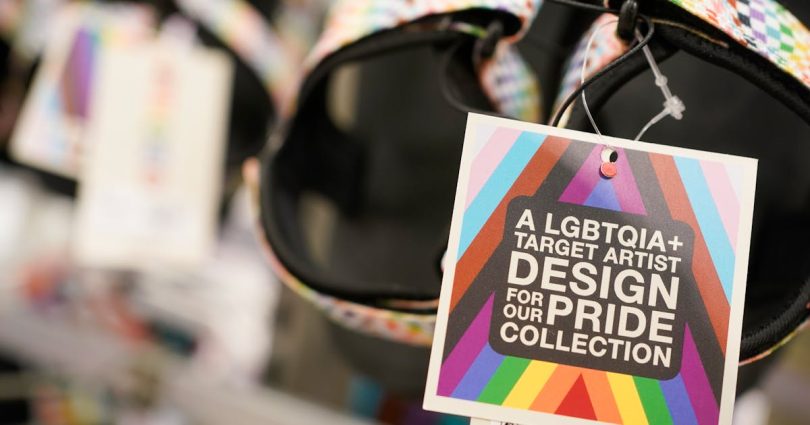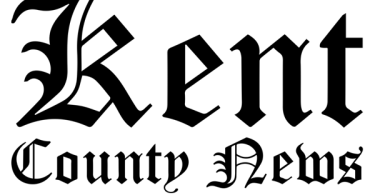A number of artists Target tapped to design part of its 2024 Pride collection have taken to social media to lament the retailer’s product development process, including last-minute cuts, drastically altered designs, wasted products and little recognition.
This is the latest controversy for the Minneapolis-based company that has struggled to find even footing on LGBTQ issues after conservative backlash about some Pride items last year contributed to the retailer’s dipping sales. In response, Target decided this month to sell a smaller selection of Pride merch in fewer stores, though all items are available online. It is a regression back to pre-2021, when Target first began offering the collection in honor of June’s Pride month in all stores.
Target maintains the Pride designers went through the same rigorous process all of its collections weather, including working directly with a third-party vendor instead of Target itself. Merchandising expert Liza Amlani said retailers usually make drastic cuts to collections, but she said there was a reason Target was more critical of its Pride items this summer.
“Think of what happened last year,” she said, referencing how some Target employees endured in-store altercations because of 2023′s controversy. “Target is playing it safe. … They are playing it safe because they want to keep their people safe.”
But for the 2024 designers who started working with Target six months before the 2023 collection ever went on sale, seeing the slow unraveling of their work has been hard to stomach.
“I didn’t receive any direct communication from Target when this was happening,” artist En Tze Loh of GRRRL Spells said of last year’s backlash affecting the design process for this year. “We were kind of just sitting and waiting in horror, worried about what might happen.”
Last fall, Tze Loh, who is Canadian, heard Target would reduce their contributions from 15 to seven or eight. In January, it was down to four. That eventually fell to just one online-only item shortly before the collection went up for sale, dashing Tze Loh’s hopes of traveling to the U.S. for the first time to see their work in a physical store.
“At Target, we work with thousands of vendors, designers and creators on an annual basis. The process of finalizing our assortment regularly includes design edits and product changes with the goal of creating a relevant assortment that will drive sales,” Target said in a statement. “We value our partners’ collaboration and creativity in achieving that shared goal.”
Routine rigor?
Products noticeably missing from the Target’s Pride collection this year include items for children like onesies. Gone also are shirts and accessories emblazoned with provocative, often pun-filled, pro-LGBTQ messaging. In 2022′s collection, a year after all stores began selling the Pride merchandise, there were more than 250 pieces. This year, Target’s website lists a little more than 60 items marked for June’s Pride month.
Some of what the designers have described is typical during the assortment planning process of major retailers, said Amlani, founder of retail consulting company the Retail Strategy Group.
“For the most part, [companies] almost always over-develop or over-assort a product mix,” Amlani said, adding retailers can go from 100 items down to 50 easily.
For a retailer like Target, it could take a year or longer to go from product concept to what’s on shelves. Many cuts to collections and final decisions happen late in the process, close to when the items go on sale so the items feel on trend, she said.
Based on her interactions with Target in the past, Amlani said, she believes any changes the retailer has made to this year’s collection is more about trying to keep their employees safe from altercations that might happen in stores than it is about supporting or not supporting the LGBTQ community.
Not every Pride designer has been critical of Target. Rob Smith, chief executive and founder of the gender-inclusive apparel brand the Phluid Project, said he had “nothing but positive experiences” with Target in the five years since the store began to sell Phluid’s clothing.
Target features several T-shirts from the Phluid Project with rainbow motifs as part of its Pride collection. Phluid also has a range of items sold year-round at Target.
Failure to communicate
Target approached artist Elizabeth Hudy to design Pride items in January 2023, including the opportunity to spotlight her by featuring her photo, bio and website “the Peach Fuzz.” she said.Six months later when Hudy saw Target’s response to the upset about 2023′s collection, she worried how it would affect her designs. Through the past year, her contributions scaled down from about 20 items to just two, she said.
It wasn’t until last week when she went to a San Francisco Target to search for her work that she realized the collection no longer featured her artist spotlight. And the pink mug she’d designed to originally say “support your sisters, not just your cis-ters” only included the first half of the phrase in the final product, Hudy said.
“I finally found it, like, shoved at the back of the women’s clothing and got my stuff, left the store, and I went to my car, and I just bawled,” she said.
Target’s work with outside designers can vary in scope, from celebrity collaborations with the likes of Diane von Furstenberg, Joanna Gaines and Kendra Scott to partnerships with smaller or more unknown artists like those working on the Pride collection. And while former Pride collections, including last year’s, did feature short designer bios on some tags and marketing, most designer partnerships of that lower level don’t receive much public recognition.
Some of the miscommunication around expectations vs. reality of the collection could come down to the middle-manufacturer that actually made the products.
“In many cases, including this one, a third-party manufacturing vendor is involved in the design process and determines what happens with any product that isn’t included in the final assortment,” Target’s statement read.
Hudy said eight of her designs amounted to an estimated 54,000 units of clothing manufactured in full. About 2,000 items will end up in her hands to donate to LGBTQ charities or sell on her own website, Hudy said.
“We had to wait for them to be de-tagged because they already had the price tags on them for Target,” Hudy said.
Tze Loh hopes to receive about 1,500 units of their items back from the manufacturer, TSC Miami, and referenced an email from TSC Miami that said some of the canceled non-apparel items were required “to be destroyed.” Going forward, Tze Loh is wary of participating in another corporate pride collaboration because of this experience.
“I think for me to assess another collaboration, they would have to really prove themselves,” Tze Loh said, “that they would stand their ground and not give in to backlash.”







